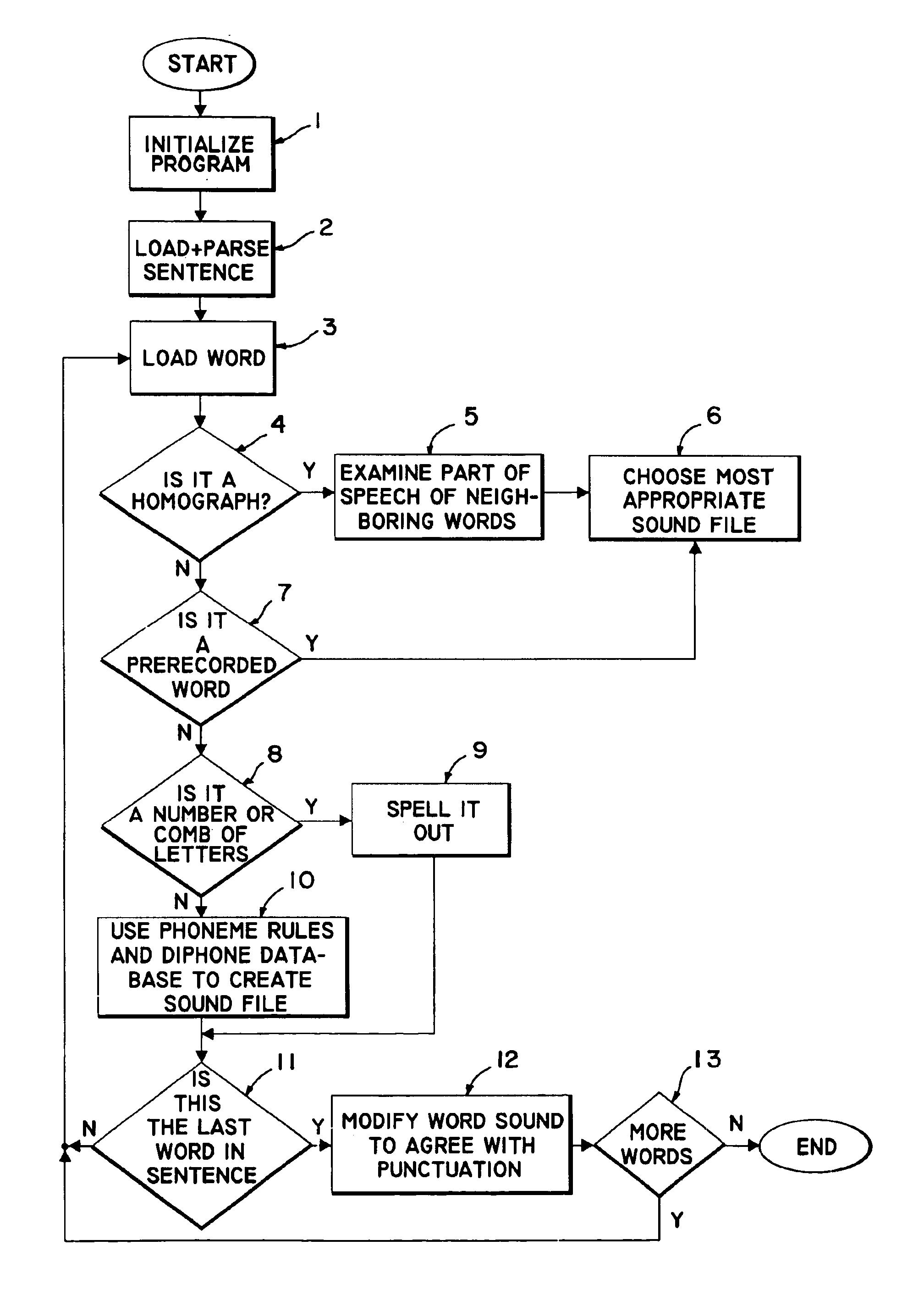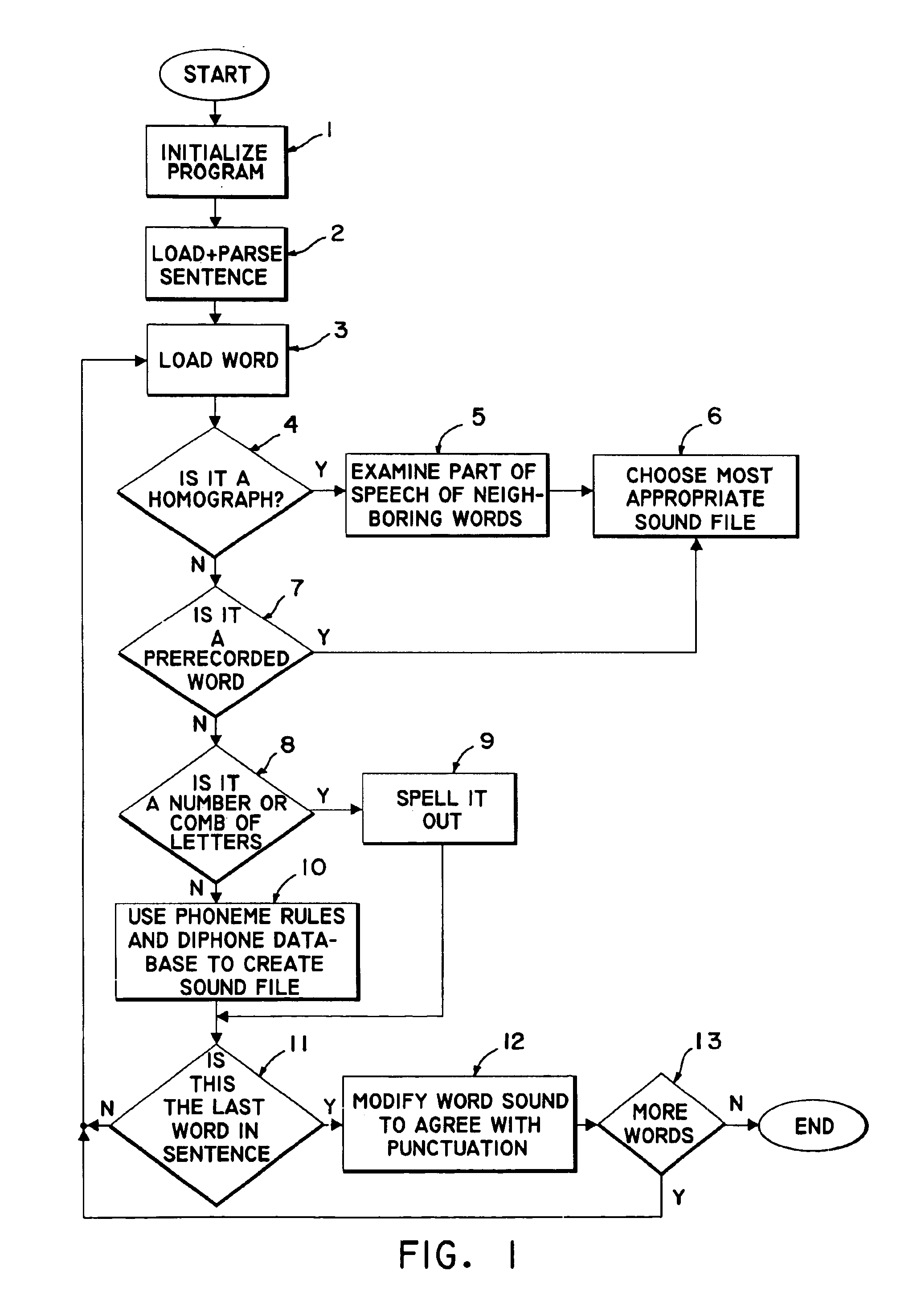Method for producing a speech rendition of text from diphone sounds
a technology of diphone sounds and text, applied in the field of speech synthesis systems, can solve the problems of cumbersome implementation, lack of accuracy needed to render speech that is reliably understandable, and inability to elicit text comprehension by itself, and achieve the effect of high versatility and user-friendlyness
- Summary
- Abstract
- Description
- Claims
- Application Information
AI Technical Summary
Benefits of technology
Problems solved by technology
Method used
Image
Examples
Embodiment Construction
[0050]Viable speech rendition of text obviously requires some text signal to be available as input to the algorithm. There are a variety of mechanisms known in the art to provide text to a software program. These methods include scanning a paper document and converting it into a computer text file, capturing a text message on a computer screen and saving it to a text file, or using an existing computer text file. Any of these or similar methods could be employed to provide input to the algorithm.
[0051]Referring now to drawing, FIG. 1 is a flow diagram of the algorithm used to produce a viable speech rendition of text. The flow diagram should be read in conjunction with the source code, which is set forth below. The basic program begins with an initialization routine. This initialization routine involves loading a file which contains the phoneme decision matrices and loading a wav (i.e. sound) file containing a list of pre-recorded words. The matrices are used in the operation of the...
PUM
 Login to View More
Login to View More Abstract
Description
Claims
Application Information
 Login to View More
Login to View More - R&D
- Intellectual Property
- Life Sciences
- Materials
- Tech Scout
- Unparalleled Data Quality
- Higher Quality Content
- 60% Fewer Hallucinations
Browse by: Latest US Patents, China's latest patents, Technical Efficacy Thesaurus, Application Domain, Technology Topic, Popular Technical Reports.
© 2025 PatSnap. All rights reserved.Legal|Privacy policy|Modern Slavery Act Transparency Statement|Sitemap|About US| Contact US: help@patsnap.com


